Welcome to Part 5 of the School of Golf Architecture. For an introduction to this series, check out the first installment.
The latest SOGA podcasts, which feature a two-part conversation with architect Jeff Mingay about how golfers can understand the routing of a course, are embedded below. Give them a listen, or keep reading—or both!
Opening thoughts
A few months ago, PGA Tour player Roberto Castro sent out a tweet that got me thinking.
I’m no student of golf architecture, but even still, I’ve never once thought about “the routing” of a golf course. What am I supposed to be comparing it to? The infinite other routings the architect could have chosen? I don’t get it. 🤷🏻♂️
— Roberto Castro (@cicioCASTRO) May 8, 2020
This is a common frustration. Golf architects often say that routing is the most important part of their job, but it’s a uniquely difficult aspect of a golf course for a player to perceive and appreciate. So with this edition of the School of Golf Architecture, my goal is to clear up some of that confusion.
The term “routing,” in golf course design, refers to how an architect lays out holes on a piece of land. Or as Tom Doak puts it, routing is “choosing the position of tees and greens for every golf hole on the course.”
This may sound simple, but it’s not. Here at The Fried Egg, we have already devoted a number of podcasts and articles to routing. This time, though, I want to approach the topic from a different direction. Typically we have asked how architects go about the routing process. Today, I would like to ask how golfers can understand a routing as they’re playing it.
Again, this is trickier than you might think. Routing is a kind of invisible art: whereas we can see the architect’s hand in how bunkers are shaped, how greens are contoured, and how hazards are arranged, we have a harder time perceiving the craft that led to a particular arrangement of holes on the land. The alternatives tend to be hidden under the finish work. And so, to echo Roberto Castro, who can say whether the choices the architect ultimately made were good or not?
To learn more about how a golfer might “read” a routing, I called up Jeff Mingay, one of the most thoughtful architects in the game today. For almost a decade, he worked with the doyen of modern Canadian golf architecture, Rod Whitman. Mingay assisted Whitman on courses like Blackhawk Golf Club outside of Edmonton, Alberta, and Cabot Links in Nova Scotia.
In 2009, Mingay opened his own firm, and he has built a reputation as a steward of Golden Age architect Arthur Vernon Macan’s legacy in the Pacific Northwest. Mingay’s restoration work can be found at the stunning Victoria Golf Club on Victoria Island as well as at Inglewood, Broadmoor, and Fircrest in the Seattle area.
-

The seaside holes at Victoria Golf Club, an A.V. Macan design restored by Jeff Mingay. Photo: Wikimedia Commons
-

The 2nd hole at Victoria Golf Club, an A.V. Macan design restored by Jeff Mingay. Photo: Jeff Mingay
-
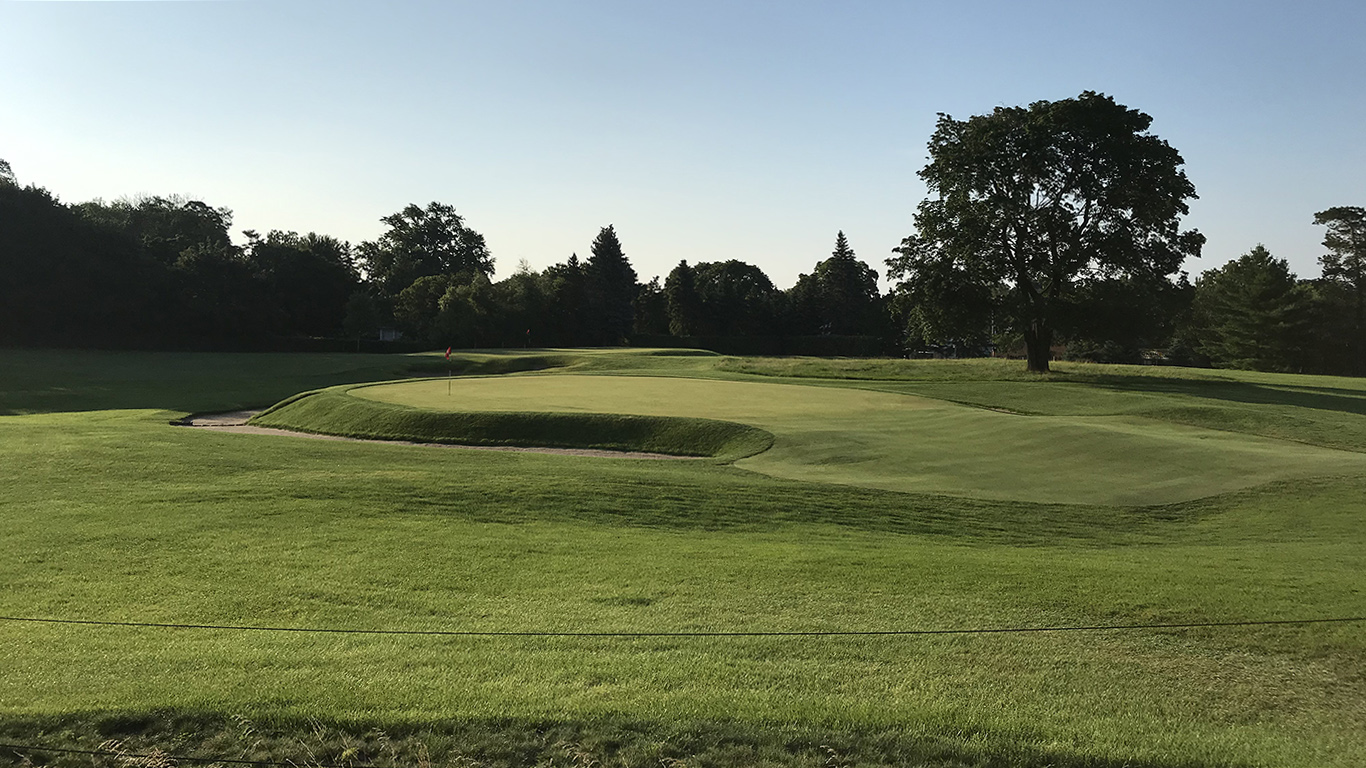
The 3rd hole at Town and Country Club in Minnesota, where Jeff Mingay is working on a long-term renovation. Photo: Jeff Mingay
-
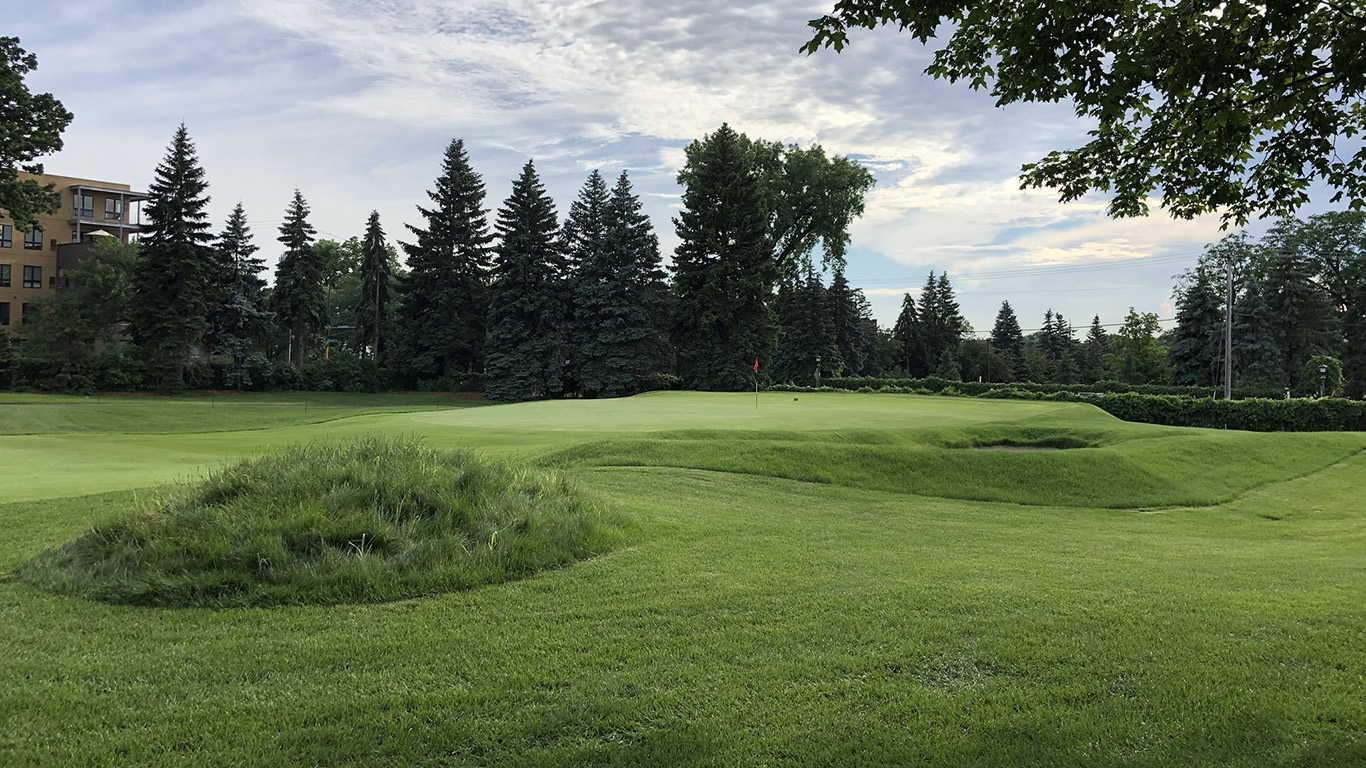
The 9th hole at Town and Country Club in Minnesota, where Jeff Mingay is working on a long-term renovation. Photo: Jeff Mingay
-
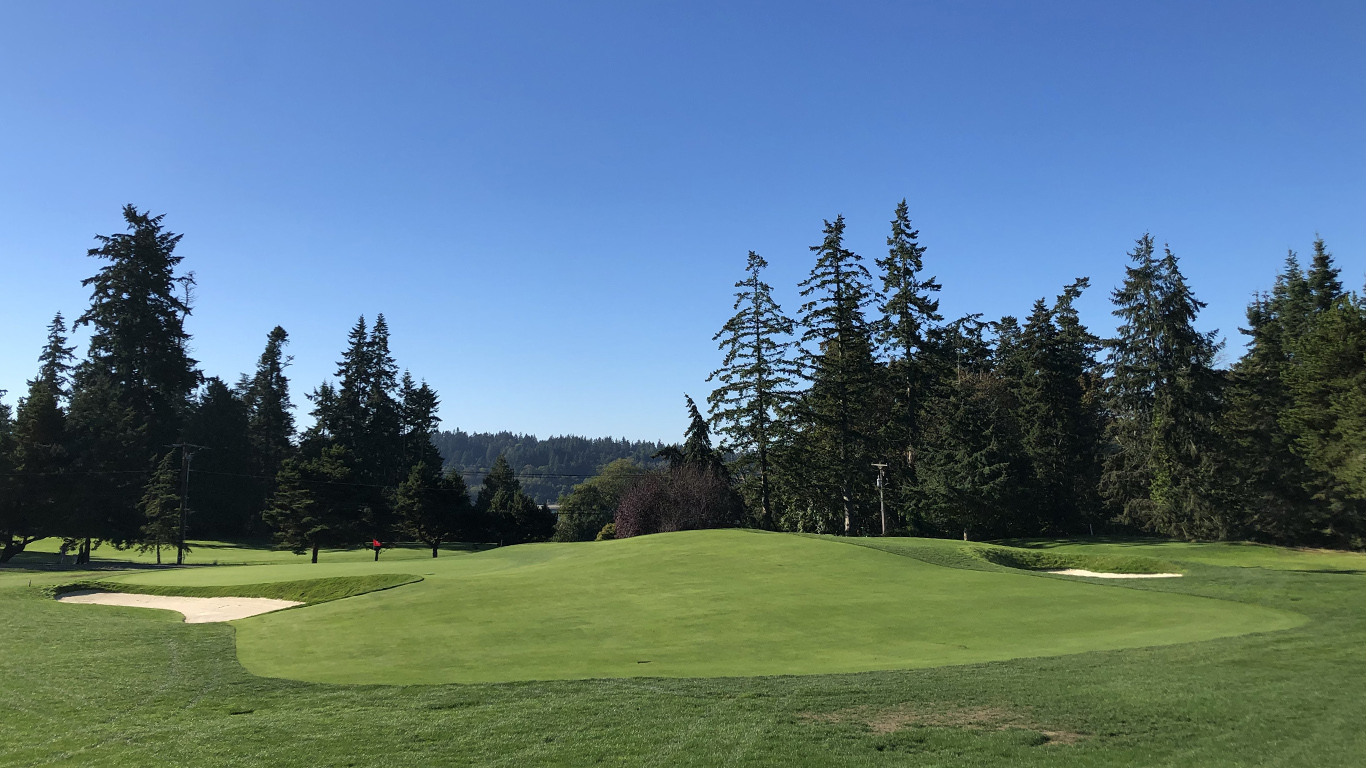
The 10th hole at Wing Point Golf and Country Club on Bainbridge Island, where Jeff Mingay has been working on a long-term renovation. Photo: Jeff Mingay
-
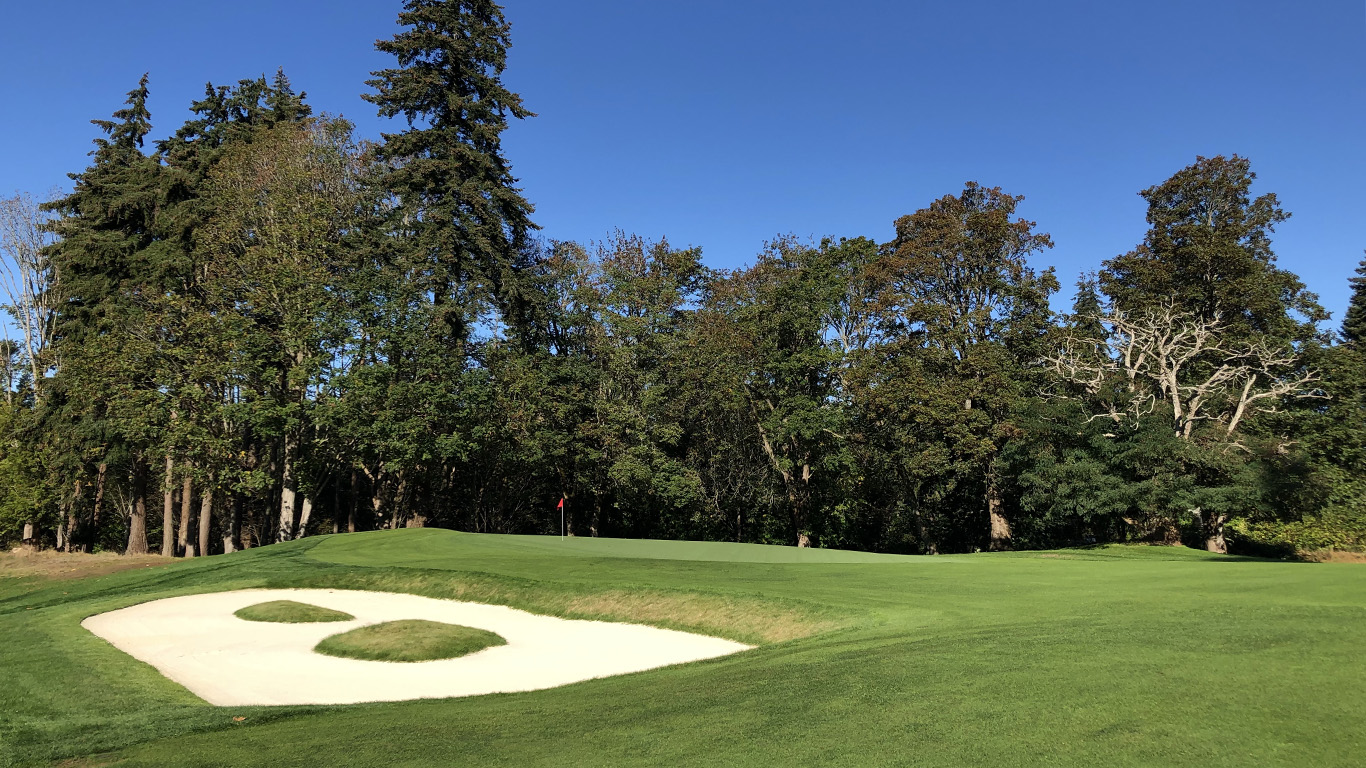
The 15th hole at Wing Point Golf and Country Club on Bainbridge Island, where Jeff Mingay has been working on a long-term renovation. Photo: Jeff Mingay
Edited highlights from the interview with Jeff Mingay
On green-to-tee transitions
Jeff: I think connectivity is very, very important. The walk between holes, from one green to the next tee—I feel like you’re just comfortable when you leave a green and you know where the next tee is. Something as simple as that. I’ve been to so many golf courses, unfortunately, where you leave a green and, if you haven’t been there previously, you’re thinking, Where do I go next?
Garrett: One place where I see that done really well is at Bandon Trails, where the name of the course focuses, in fact, on the transitions between the holes. And those transitions are beautiful, the paths are well tended, and the walks are well thought out.
-
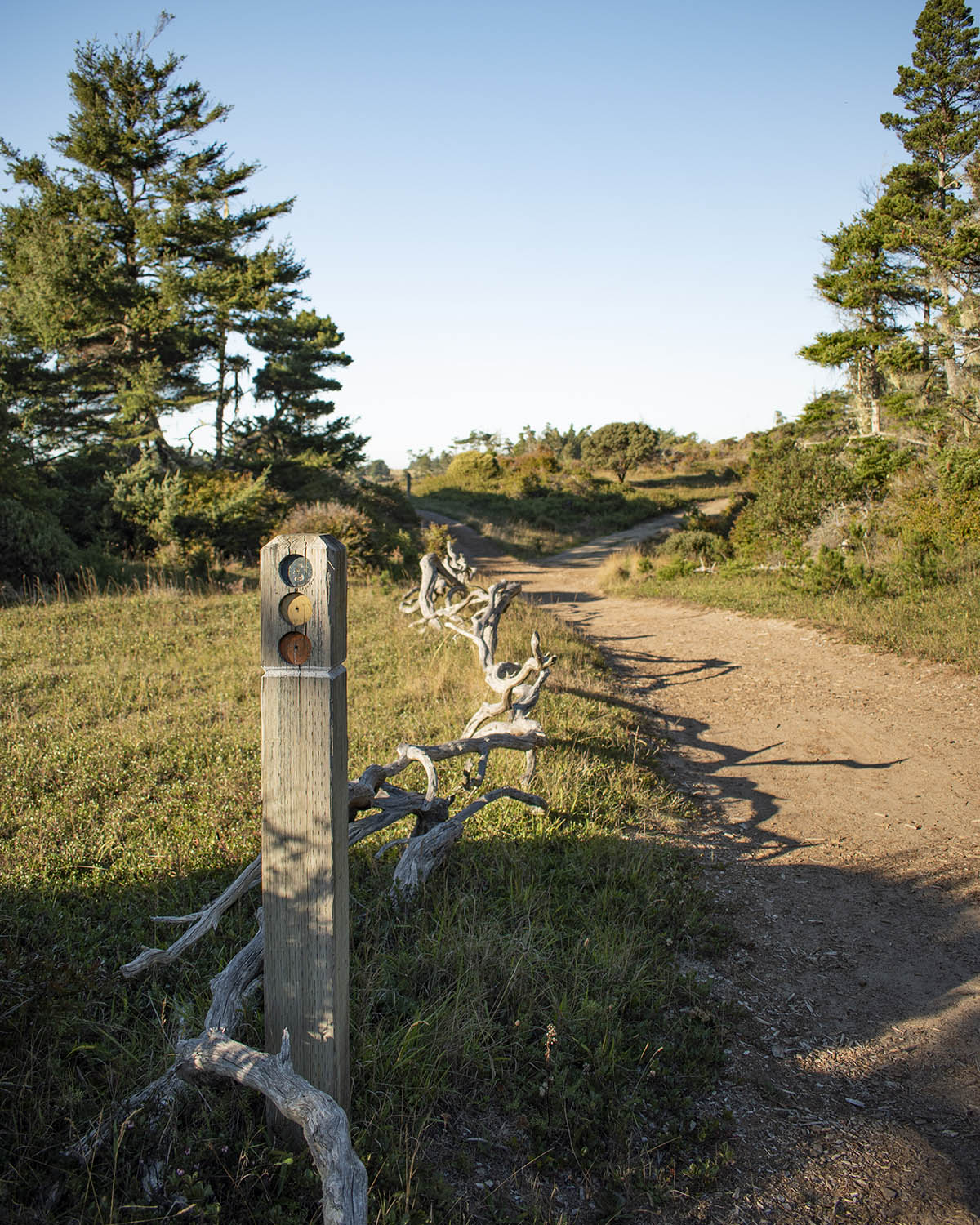
The transition from 16 to 17 at Bandon Trails. Photo: Garrett Morrison
-
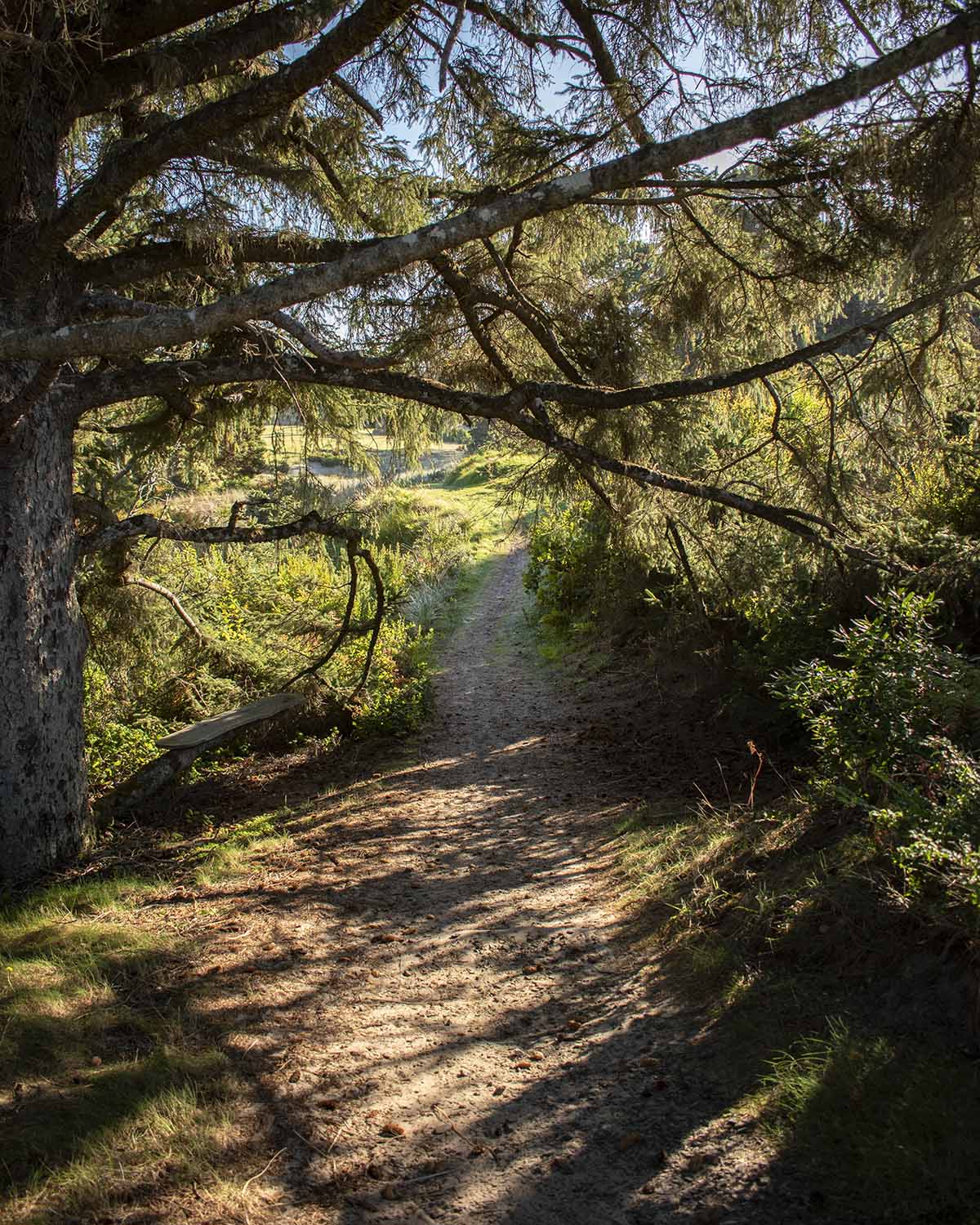
The transition from 2 to 3 at Bandon Trails. Photo: Garrett Morrison
-
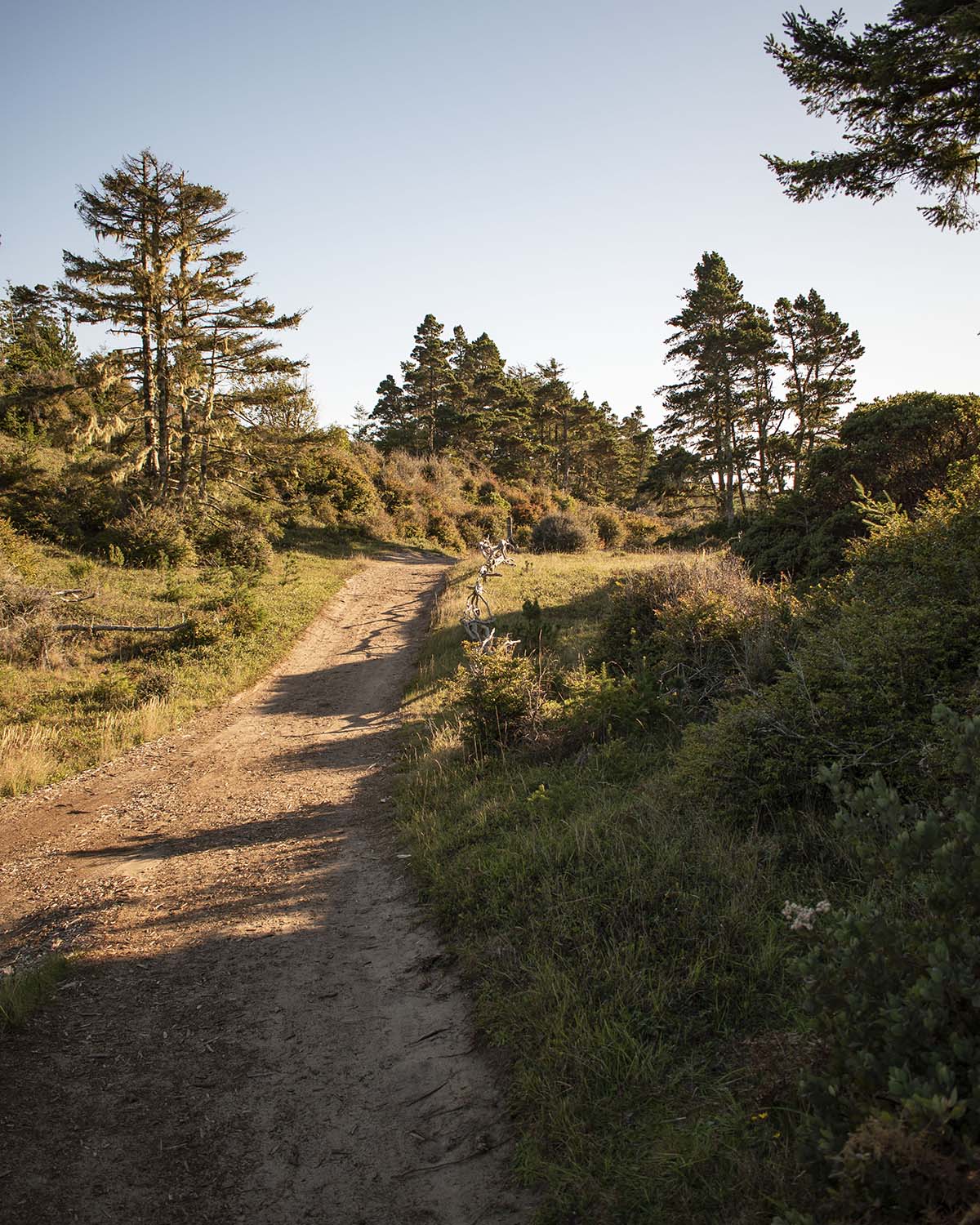
The transition from 3 to 4 at Bandon Trails. Photo: Garrett Morrison
-
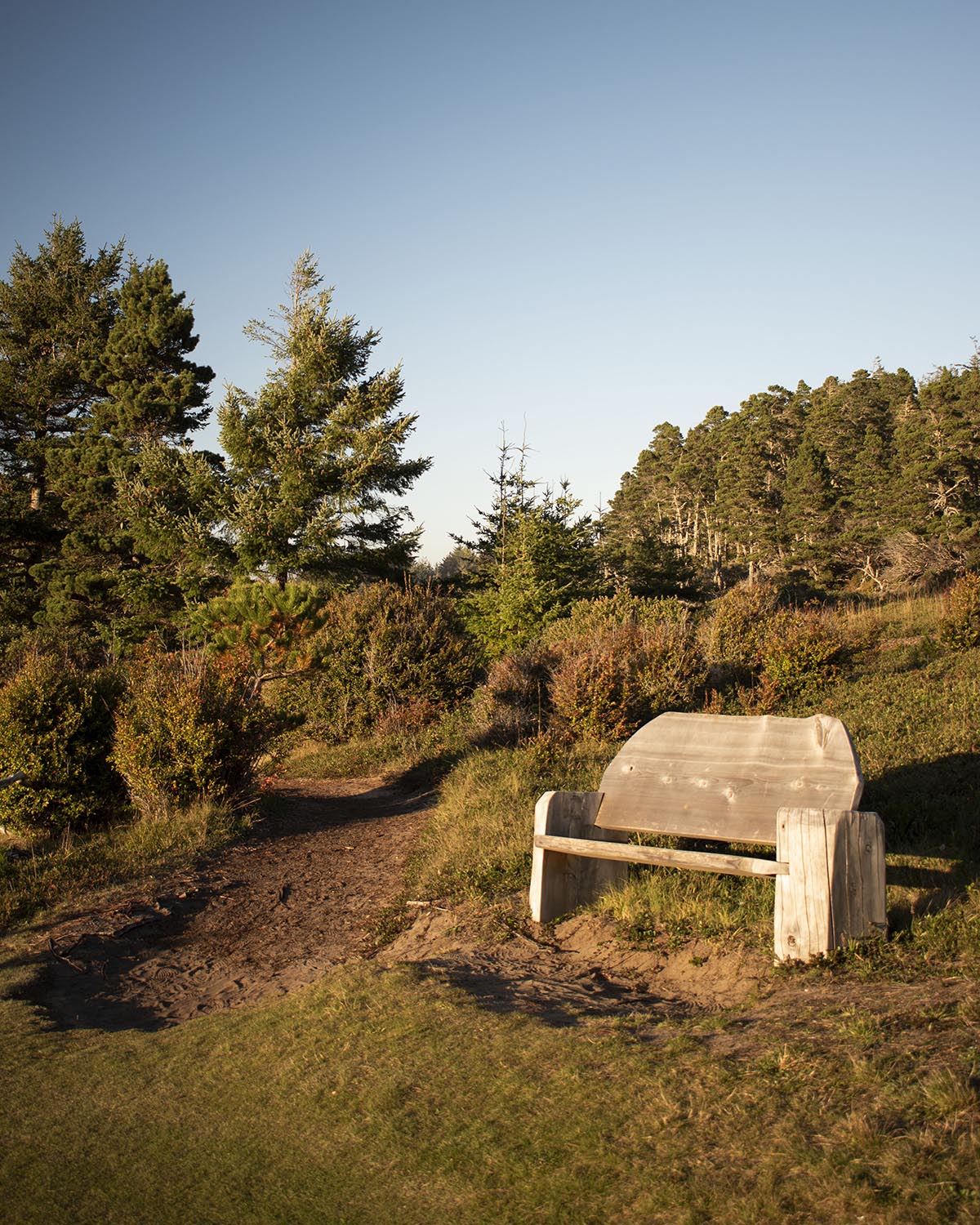
The bench by the 17th tee at Bandon Trails, with a walking path to the left. Photo: Garrett Morrison
Garrett: When you have one of these long walks between a green and a tee, I think it’s great not only when there’s something to look at—a view or just something to give you a reason to do the walk—but I also like when it feels as though you’re going somewhere new, where you’re not just going back through the same old territory.
One of my favorite green-to-tee transitions anywhere: 11 green to 12 tee at Pacific Grove. pic.twitter.com/Wv38FrOZTY
— Garrett Morrison (@gfordgolf) December 28, 2018
On how a routing can maximize natural features
Jeff: Essentially what a golf course architect is trying to do is get the best out of the natural assets you’re provided on every property. You want to use the existing terrain, the existing vegetation, the existing views the best way you possibly can—for a couple of reasons. Obviously that’s going to minimize construction costs. If you can find holes that are just laying on the ground, you don’t have to push a lot of dirt around. But the other reason to use natural features is that you’re going to inevitably arrive at unique holes.
Garrett: Not all sites have amazing natural features. Say there’s a course on a plain hillside that doesn’t have any humps or bumps; it’s just a slope. How can a routing maximize that site?
Jeff: A hillside can actually be quite interesting. You can create downhill holes, uphill holes, sidehill holes. So if we can put that puzzle together and utilize that slope so that we’re constantly changing direction—on one hole we’re playing uphill; the next one we’re playing downhill; the next one we’re playing sidehill—a hillside, even though it’s featureless, can actually end up being something special.
Garrett: When I walk a golf course, I try to identify what the most prominent natural features are—whether it’s a big bump or a slope or some kind of vegetation or whatever—and I look at how many holes use it, and how they use it: whether there are greens and tees there, whether you return there multiple times during the round.
Jeff: Most of the great routings feature those congregation points. They are really cool from a playing perspective, from a spectating perspective. You see it at Augusta, where 2 green comes down into that congregation. 3 leaves, 7 comes back, 8 goes off.
-
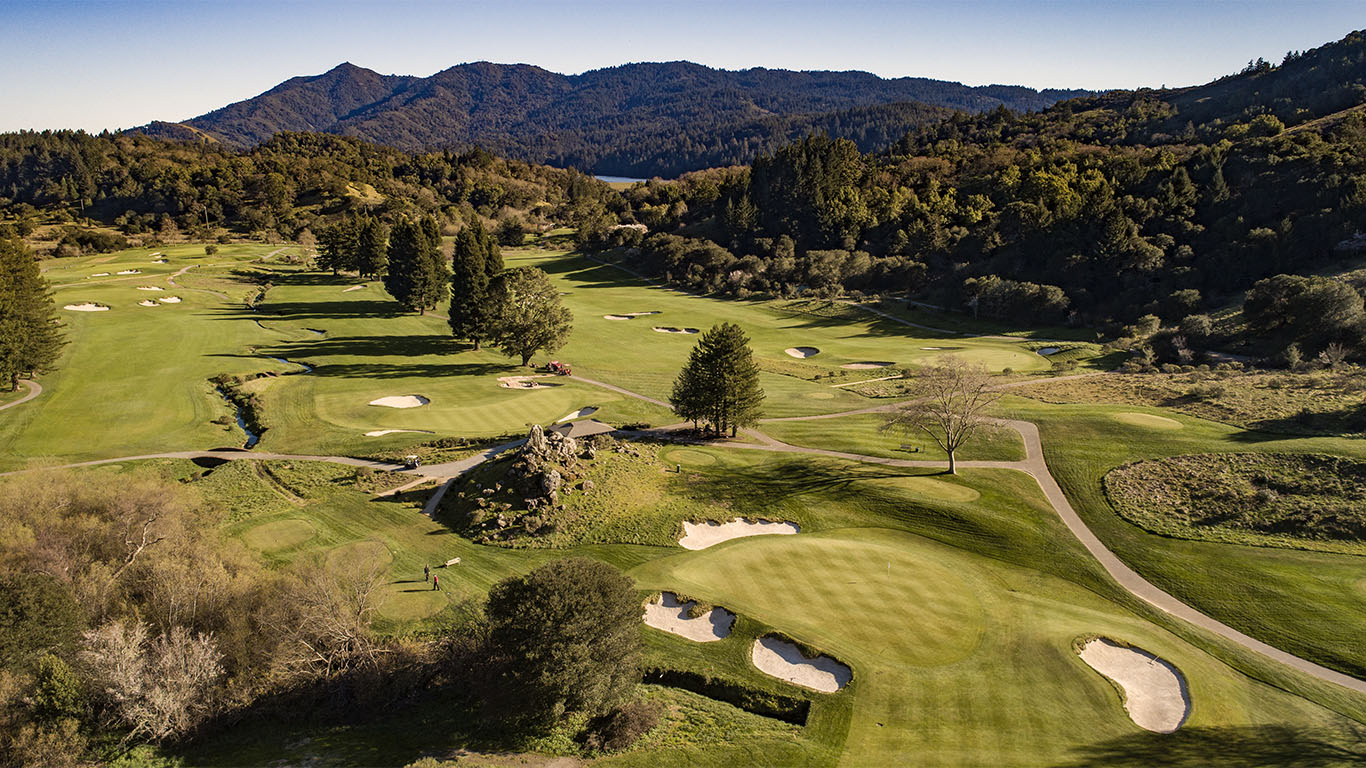
A congregation point at Meadow Club, another great Alister MacKenzie routing. Photo: Andy Johnson
-

A congregation point at Meadow Club, another great Alister MacKenzie routing. Photo: Andy Johnson
On routing as storytelling
Garrett: Do the best routings have a sense of narrative, or a sense of drama, or a sense of music about them from beginning to end?
Jeff: All of the great courses are like different albums or different books or different songs, and they all have their first-tee-to-home-green story. Like Merion—there’s another great example of taking a relatively small feature of the site, the old quarry, and utilizing it so perfectly for the final three holes. Incredible.
Frankly, Pete Dye did the same thing at Sawgrass, digging a couple of lakes there and coming up with 16, 17, 18 as the finishing piece. And Mr. Dye would be the first to admit that he learned that lesson from places like Merion, places like Pebble Beach and Cypress Point. Bringing you to that kind of conclusion is another consistent among many of the great courses in the world.
On the routing of the Old Course at St. Andrews
Garrett: To me, the Old Course routing is very elemental or primal, in a way. You start from town, basically, and you can just imagine the initial golfers saying, “Okay, we start here because this is where the town is. And we’re going to head straight out to the River Eden. Once we get there, we’re going to kind of hang out there for a second.” That’s the shepherd’s crook part of the routing. “We’re going to stay in this nice little gathering spot for a second because this seems like a nice place to be. Then we’re going to return home.”
There is a natural sense of drama about that routing. That’s basically the plot of The Hobbit—you know, “there and back again.”
Jeff: The other thing is that piece of linksland is a thin strip that, just as you described, took off from town, stopped at the river, and came back. And it would be interesting—I mean, this is completely impossible—but it would certainly be interesting to go back in time and see who decided to put the quote-unquote “greens” where they went and where they are today. Somebody had to go out there and say, “Well, this is a reasonably flat spot here where we can cut the hole in the ground.”
Essentially the evolution of the Old Course involved picking those sites that were the best green sites, which is what golf architecture still begins with when you get out on a raw piece of ground. The first thing we do as designers is start to look at where to put the greens. And the questions are: Which are the most beautiful sites? Which sites will allow you to connect them in a way you’re going to end up with the best variety of holes? And where is it going to be relatively easy to build a green?
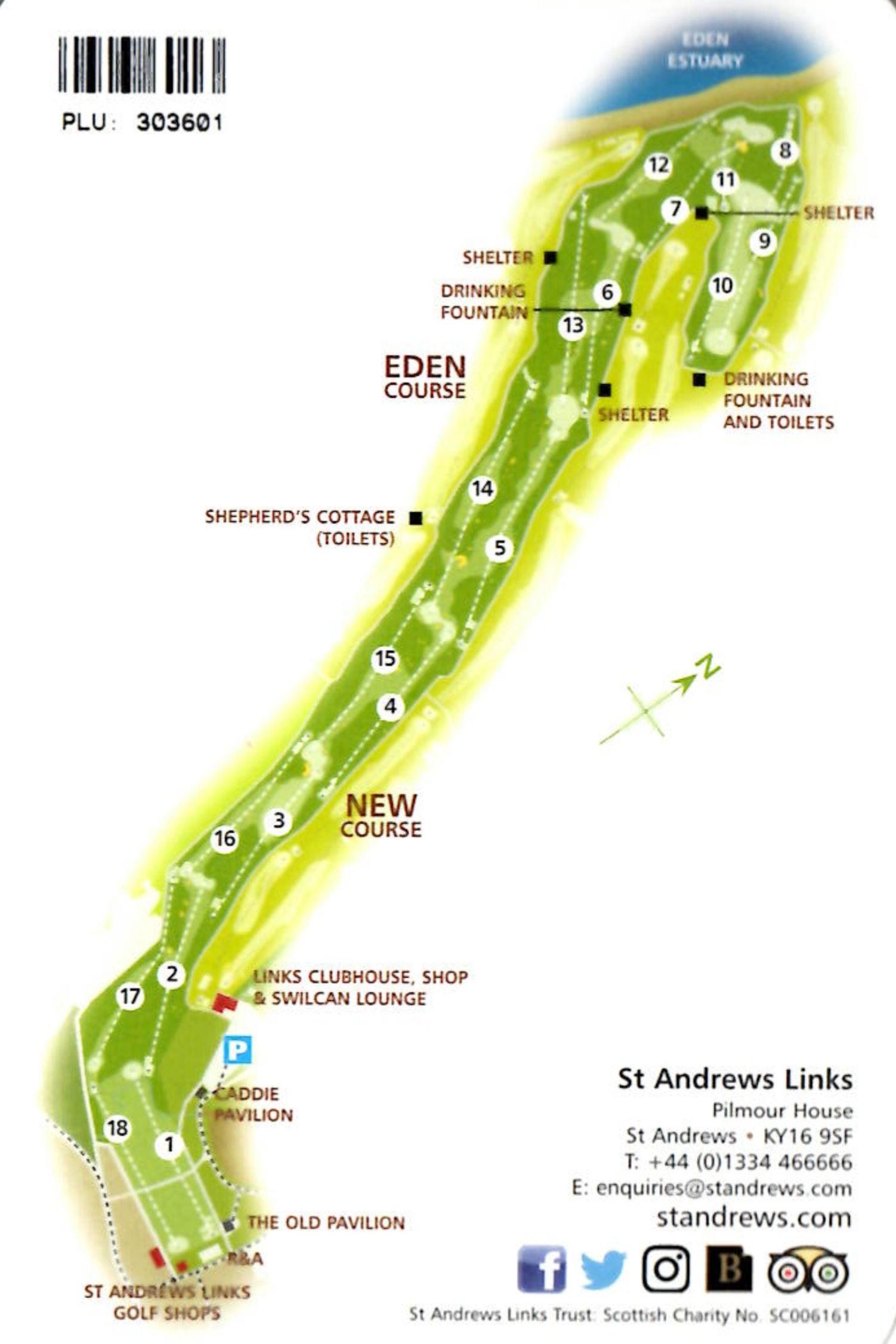
-
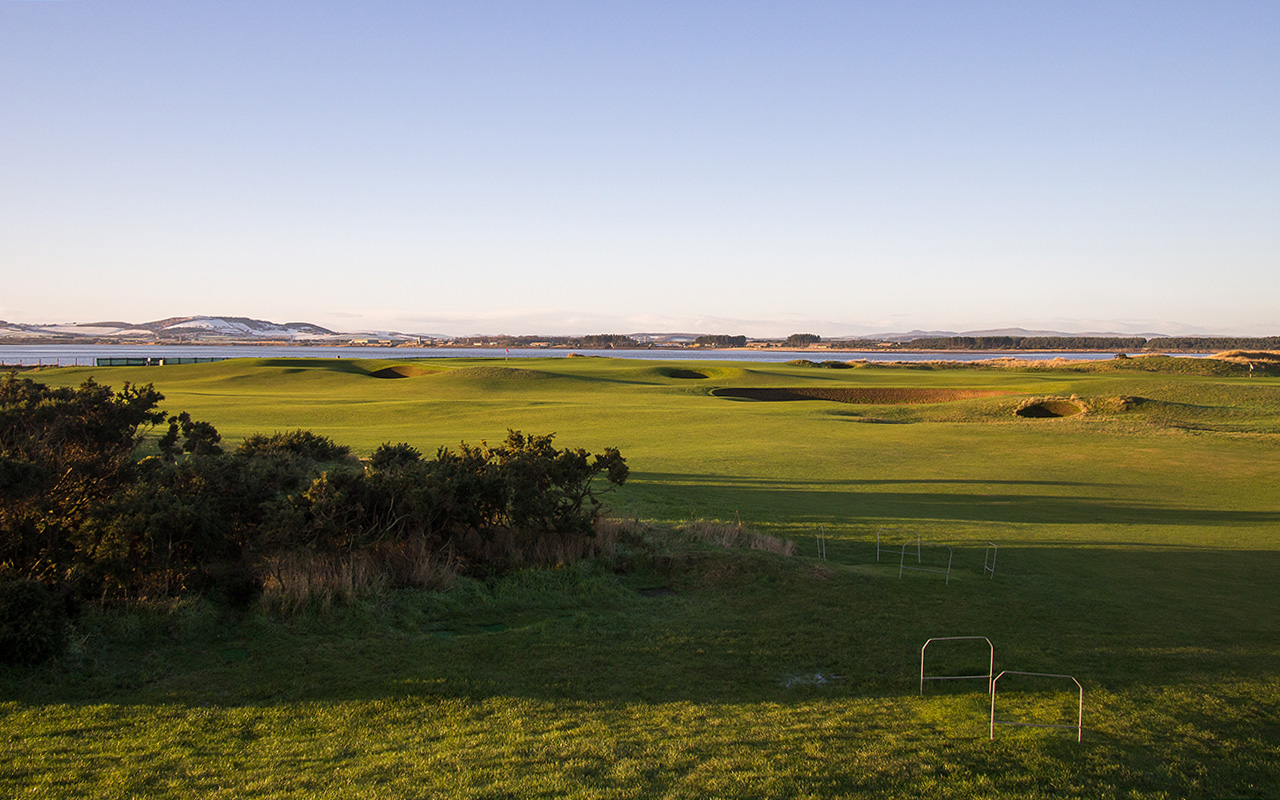
The journey out: the 11th hole at the Old Course. Photo: Clyde Johnson
-

The journey home: the 17th green at the Old Course. Photo: Clyde Johnson
On the routing at Muirfield
Garrett: At Muirfield, for those who are unfamiliar with it, the front nine goes around the perimeter of the property, and the back nine is basically within the front nine. So you’ve got these almost concentric circles, though the holes, especially on the back nine, often reverse in order to fit in. But you can imagine it as a kind of outer-to-inner routing. And since then, we’ve seen architects adapt that routing to a number of different sites.
Jeff: When Harry Colt showed up at Muirfield, there was a pretty rudimentary, in comparison, Old Tom Morris course there. It had more of an out-and-back routing—not as varied as you see there today. And that’s the lesson Muirfield taught in the early days of routing golf courses: how to lay out holes with the wind consideration in mind. Where’s the prevailing wind, what does it do a majority of the time, and how can we get the holes to confront that wind at varying angles?
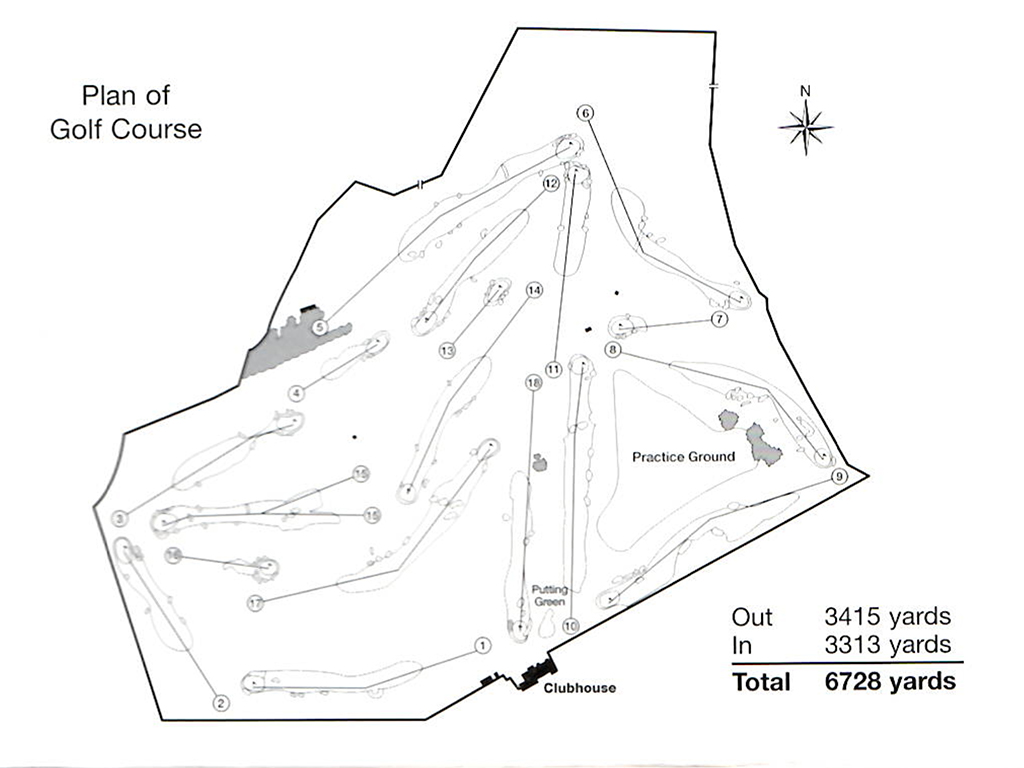
On the routing at Cypress Point
Jeff: The biggest thing at Cypress Point is that Alister MacKenzie was truly trying to celebrate that one-of-a-kind site. You’re dealing with dunes, Cypress forest, and coastal bluffs. And he does a wonderful job starting the golf course in the dunes, taking you into the forest, leaving the forest, back into the dunes, one more trip to the forest, back into the dunes. Eventually, coming down 13 and 14, you see the Pacific Ocean; it’s getting closer and closer.
Then you get one of those wonderful little walks in golf. You wouldn’t say 14 green and 15 tee are very well connected. But once you get across the road, you’re on this little trail. And when you turn the corner and see that hole for the first time, it’s one of the most exhilarating experiences. I’m sure that trail was cut purposefully for that reveal. And then finally playing the coastal holes at Cypress as the big conclusion, I’m not sure it gets much better.
People complain about the 18th. I was reading about that the other day, that someone had said that Cypress Point is the best 17-hole course in the world because 18 turns you away from the ocean. I don’t agree with that. I think the MacKenzie wanted to take you through those beautiful Cypress trees, and the Cypress trees at Cypress Point are some of the most beautiful, natural things you’ll see anywhere. Andthe 18th hole celebrates that.
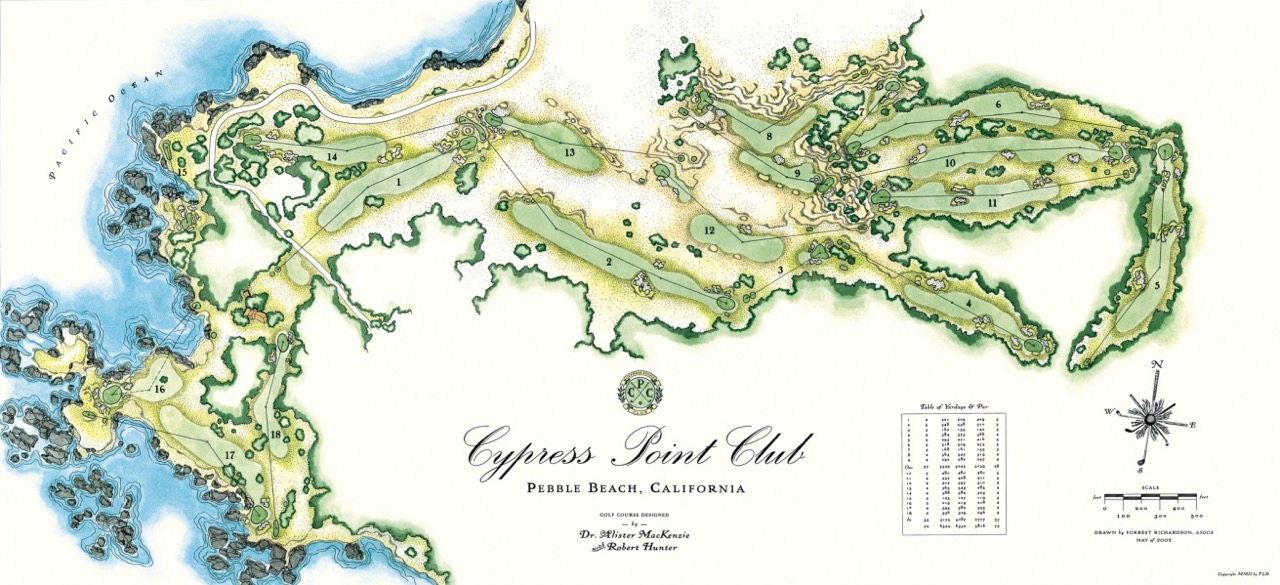
On the routing at Highlands Links
Jeff: Highlands Links traverses three or four very distinct environments, and it’s actually an out-and-back routing. 1 leaves the little pro shop, plays down the peninsula, starts out at the ocean, and takes you to the forest. By the time you get to 9 green, you’re 10 kilometers from where you began. 13 takes you back to the ocean again, traversing beautifully distinctive landscapes.
Garrett: I’m curious, when you’re playing that course, does it feel like it’s an out-and-back routing, or do you lose sight of that as you’re going along?
Jeff: I’ve played Highlands Links enough to confidently say that it does not feel like an out-and-back routing at all. When you’re out on the course, you feel like there’s enough change in direction. You’re getting a huge variety of views.
Garrett: You can do an out-and-back routing in ways that don’t feel repetitive, but there is this natural sense of going on a journey, reaching a point, and then returning home. And all of those things have an emotional pull. There’s the mystery of the journey, the yearning to get out to that distant point. And then once you’ve spent your time there, once you’ve seen what you need to see, there’s an equal emotional pull that draws you back home. I think these are things that tug at us in a really primal way, and these routings, when done well, can do that.
-
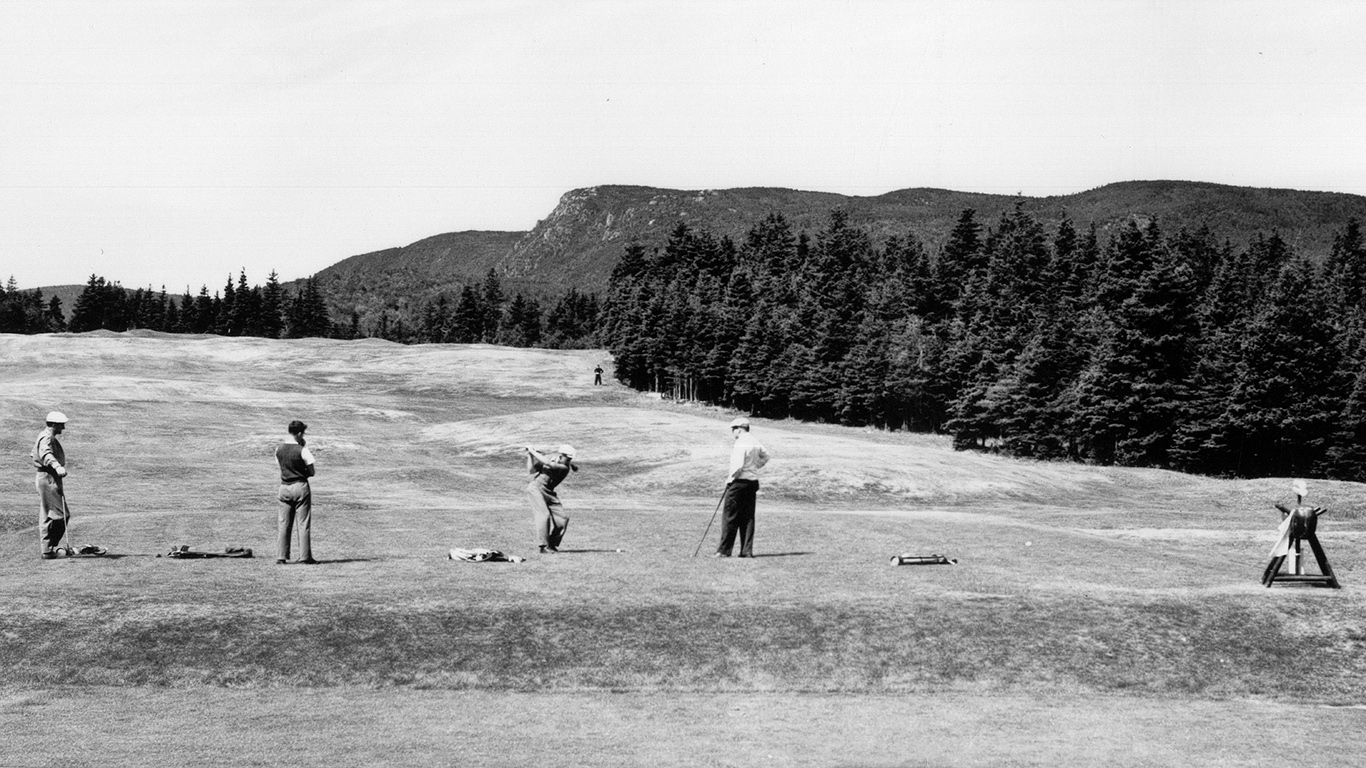
Historic photos of Cape Breton Highlands Links: 1st hole
-
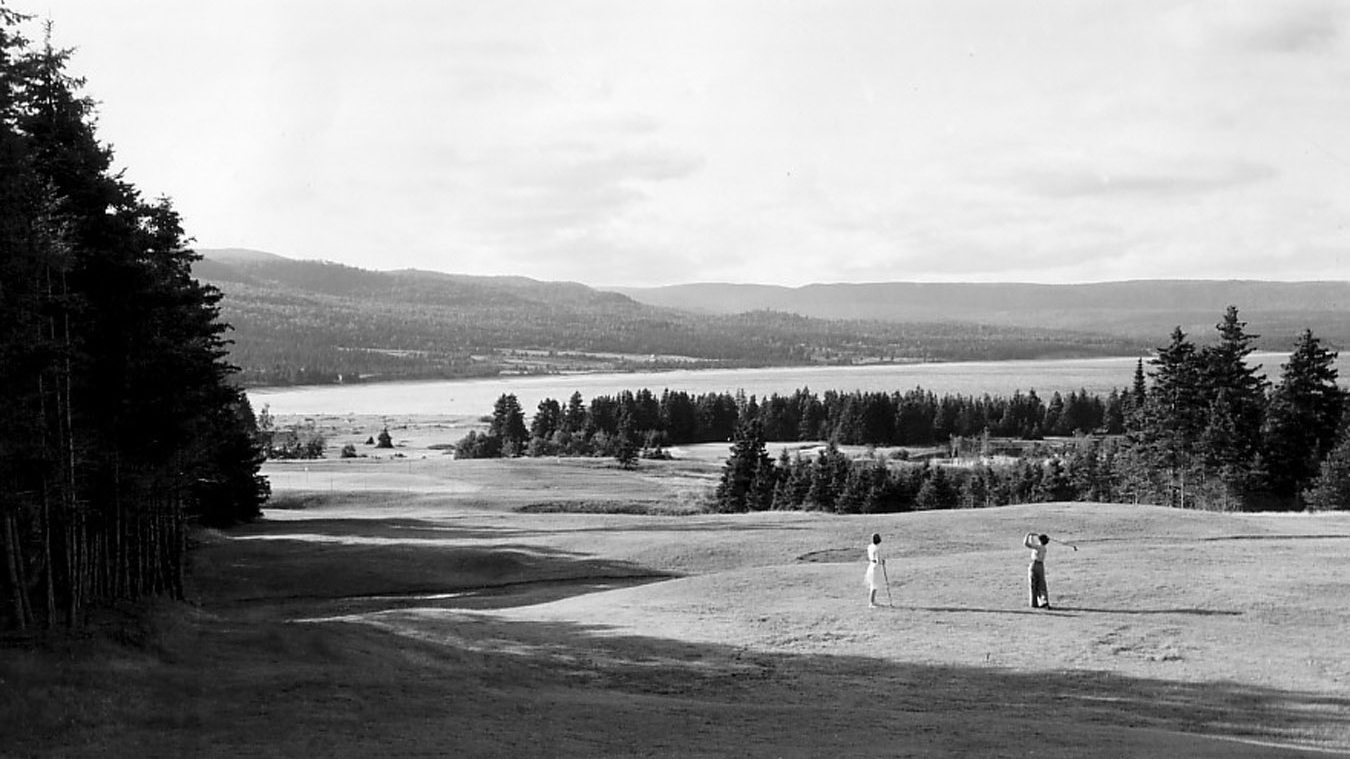
Historic photos of Cape Breton Highlands Links: 2nd hole
-
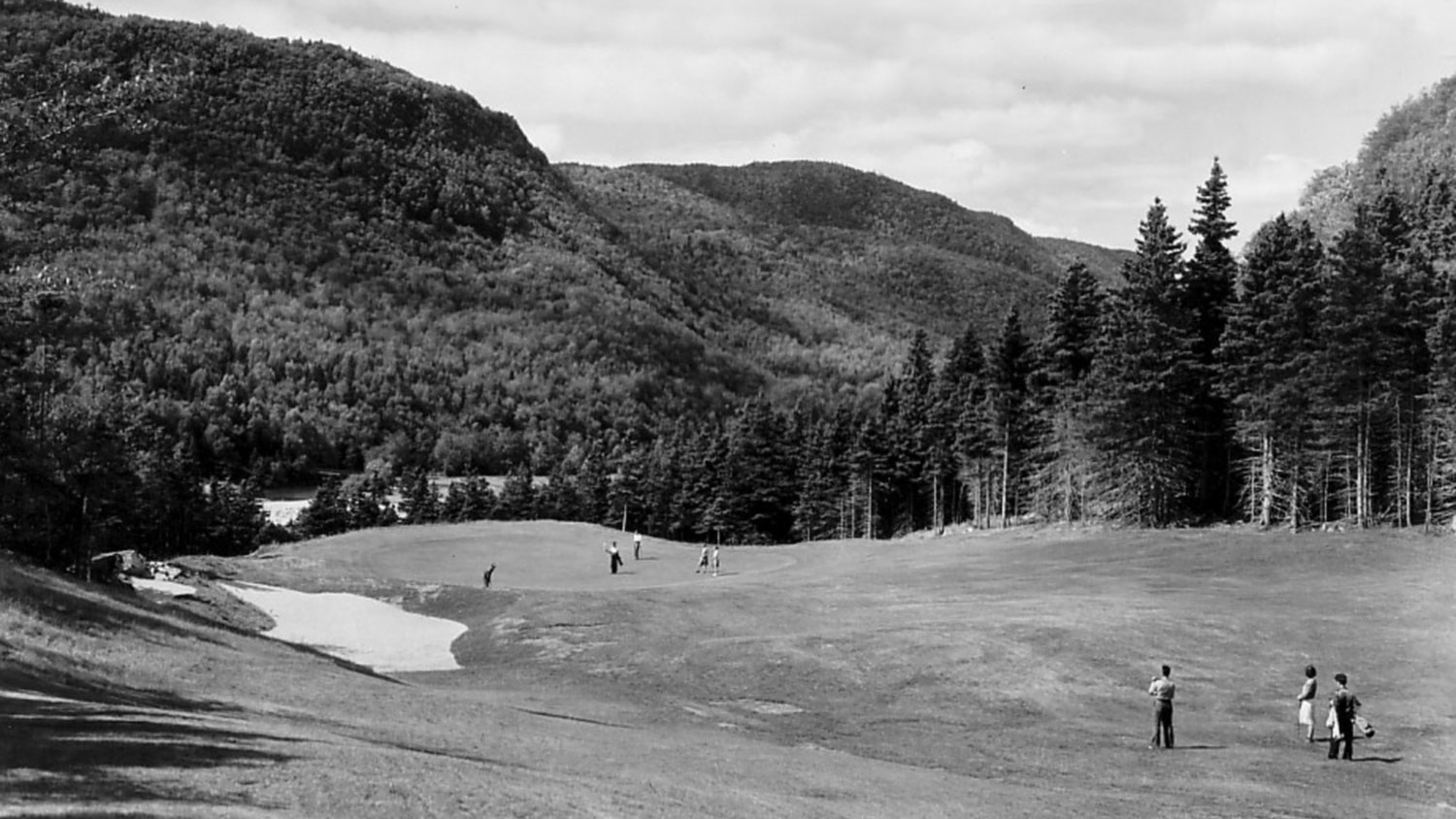
Historic photos of Cape Breton Highlands Links: 8th hole
-
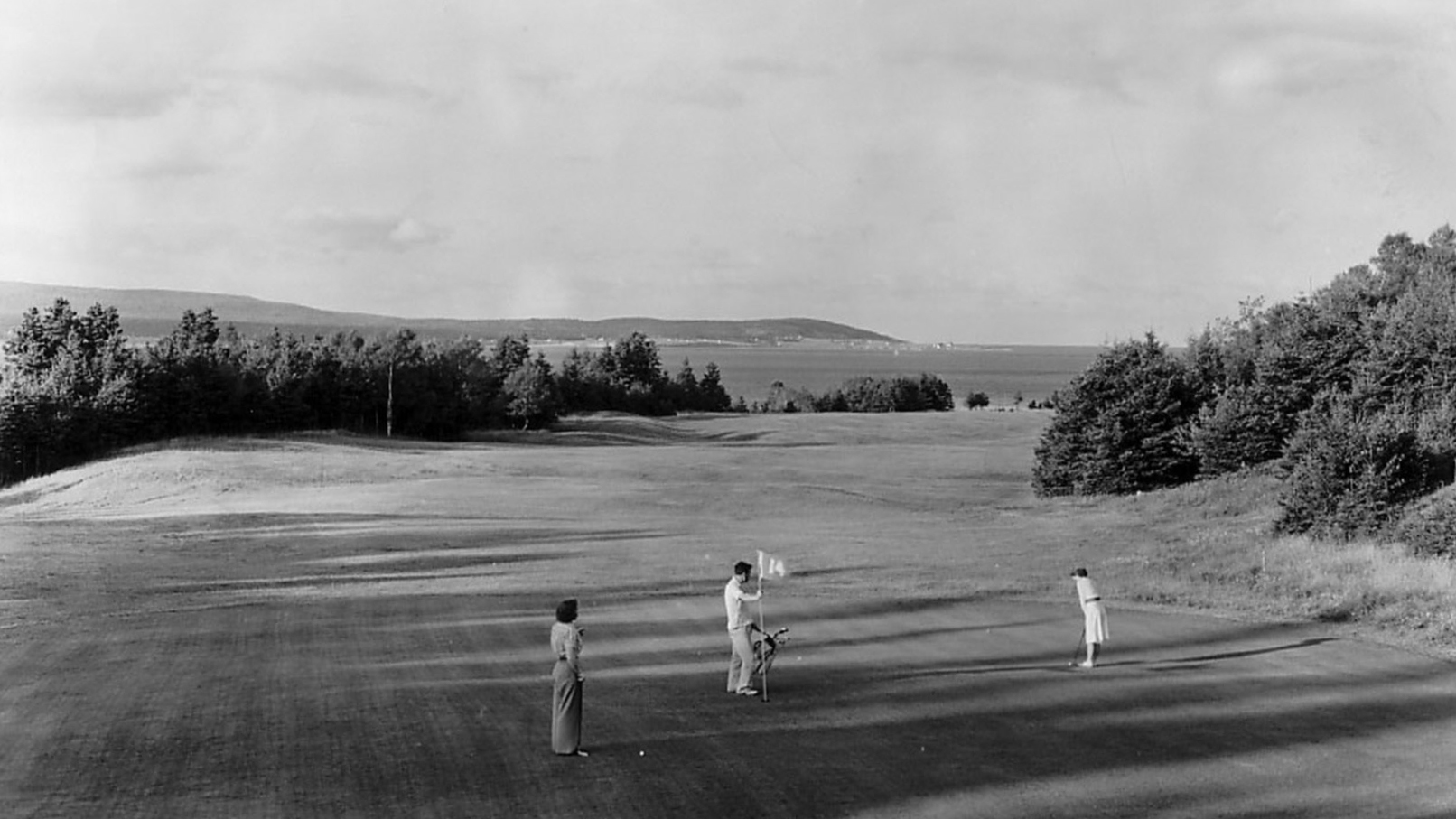
Historic photos of Cape Breton Highlands Links: 14th hole
-
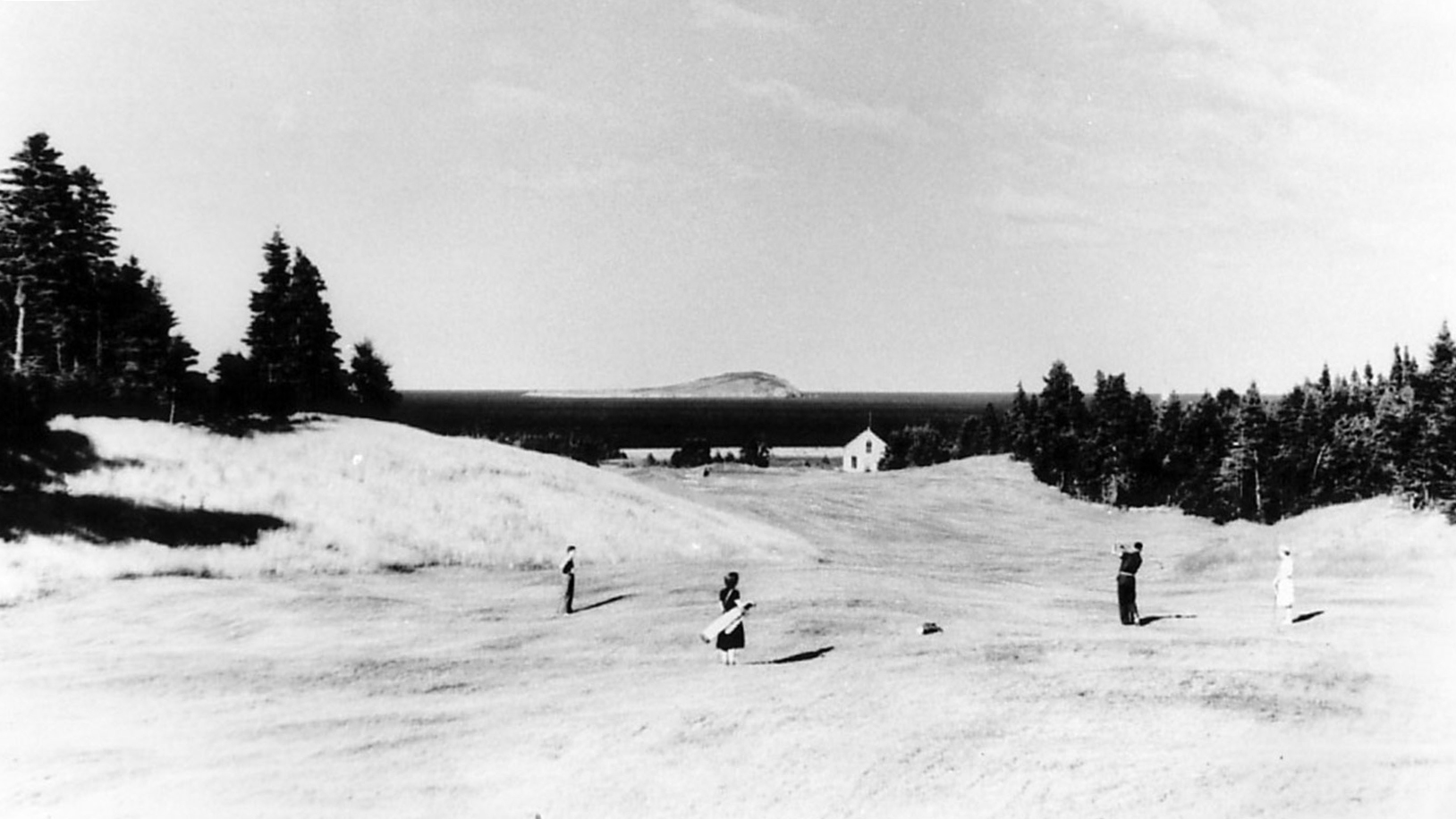
Historic photos of Cape Breton Highlands Links: 15th hole
On new—or under-explored—frontiers in routing
Jeff: I’m just shocked that concept of a reversible course hasn’t been pursued more diligently over the past half century. Having two courses in one—like the Old Course shows us, and now what the Loop is doing—there’s so many benefits to it. And when you talk about Ohoopee, it’s not a reversible golf course, but they’ve got some extra holes there. So you can play alternate routings.
Garrett: I want to shout out Dan Hixson’s work at Silvies Valley Ranch, which is a brilliant concept. It’s a reversible routing, but it has 27 greens, and the ways it’s made to work on that hilly piece of property are so complex and varied. And one of the things that made that happen was not being too wedded to the idea that “I’ve got to have a pure reversible course. There’s got to be 18 greens.” Just realizing that there are many ways to do it.
-
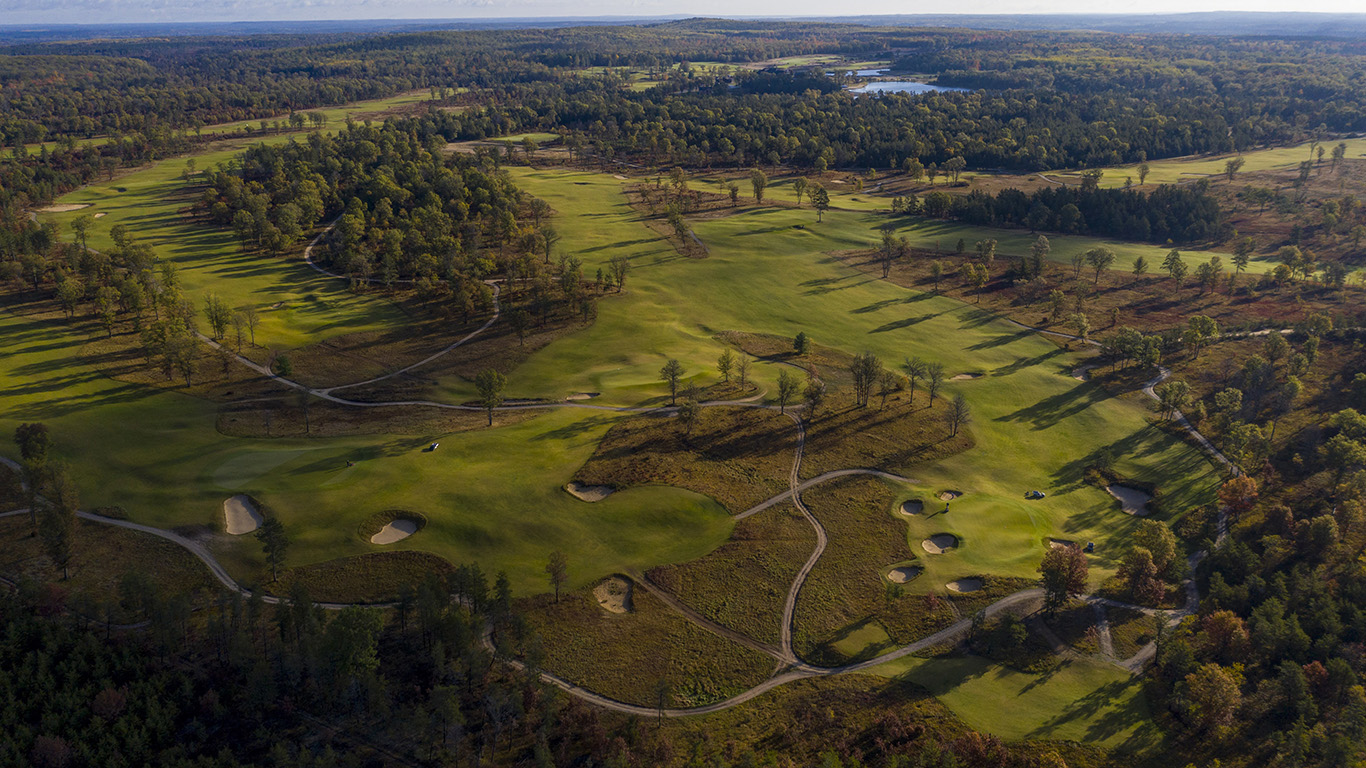
The Loop, designed by Tom Doak. Photo: Andy Johnson
-
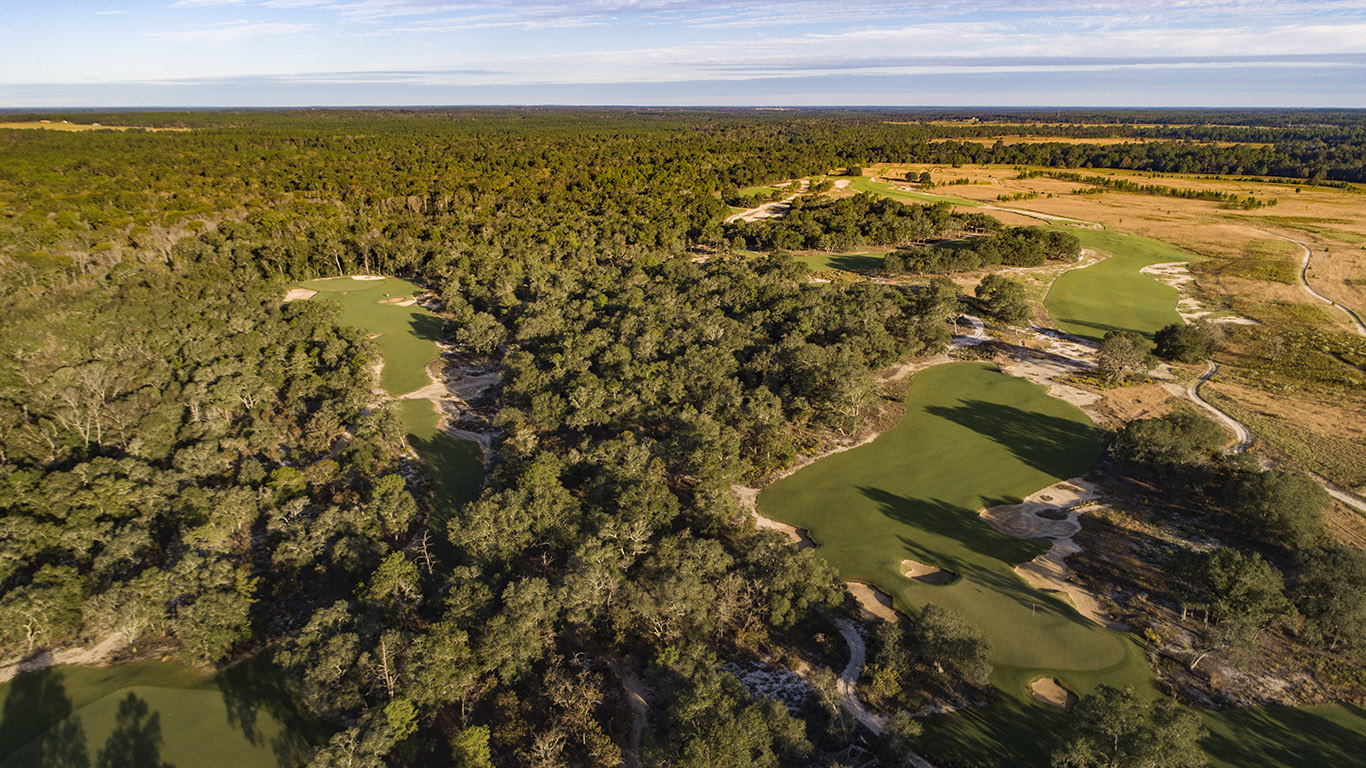
Ohoopee Match Club, designed by Hanse Golf Course Design. Photo: Andy Johnson
-
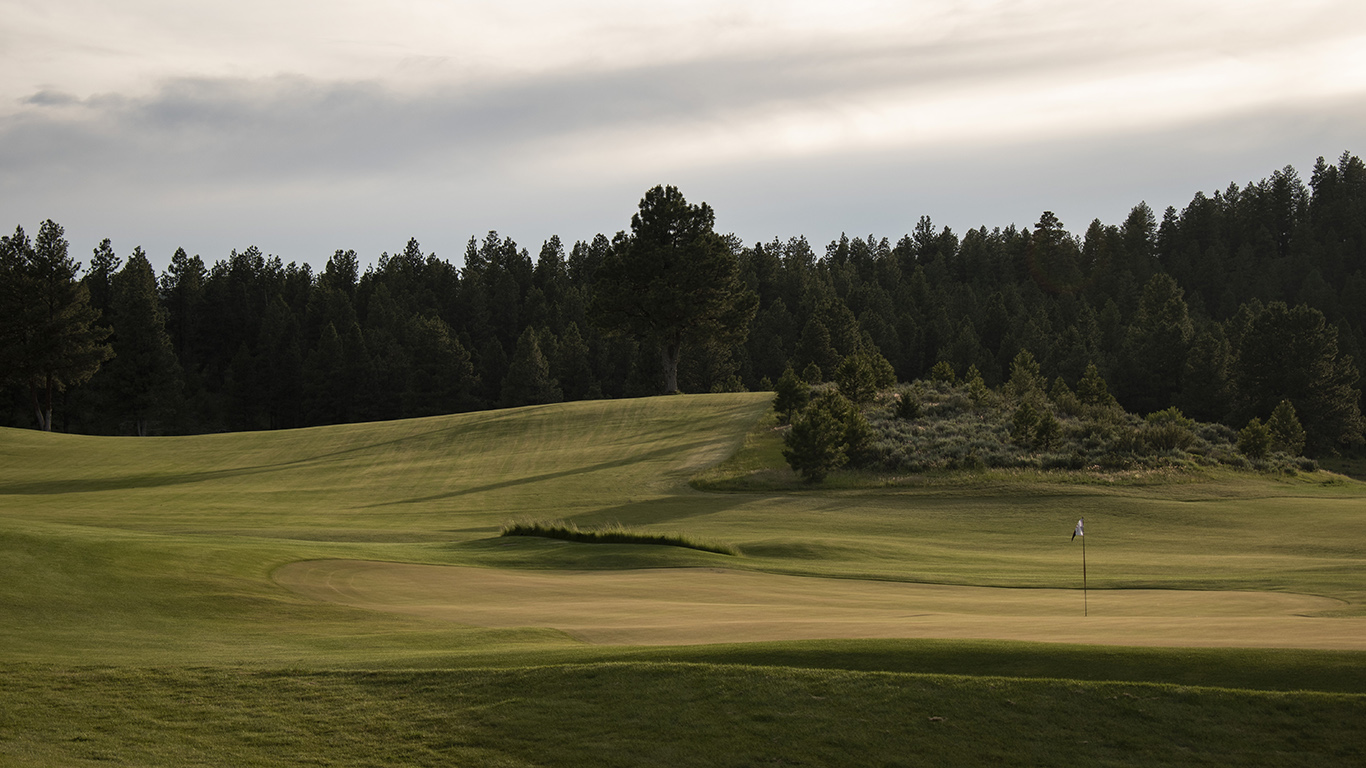
Silvies Valley Ranch, designed by Dan Hixson. Photo: Garrett Morrison
Garrett: And I have to wonder why we aren’t doing these things. Does it have to do with rankings? Does it have to do with golf’s tentativeness to try something new? What’s holding us back here?
Jeff: I find that golfers are just married to their handicaps, which is something that has always made me shake my head. I mean, I just want to play interesting golf. But most golfers, they want the tees in the same spot and the pins in the same spot every day because they think that little marker is where the course was rated from. They’re not thinking about interesting golf holes as much as their own score and the bets they have going on that day, which are dependent on consistency. And really the last thing we want is consistency.
But I think these short courses and these reversible course ideas are starting to spark more interesting golf course architecture. It’s made a lot of people think differently about where they want to play, how the game is played, and how the game is played in the most fun way possible.
Closing thoughts
One of my favorite things about golf is that the playing fields are not standardized. A course can have 13 par 3s, like Bandon Preserve, or five long holes, like the original Leith Links in Scotland. There’s no rule saying that the game played on those routings isn’t real golf.
But as Jeff and I discussed, modern courses generally haven’t taken the invitation to be whatever they want. Instead, they have tended to restrict themselves to the championship model of 18 holes and a par between 70 and 72.
I think this trend has gotten in the way of the best practices of golf course routing. An architect should concentrate on taking advantage of natural landforms, or connecting greens to tees in a sensible way, or developing a narrative throughout the round—not on squeezing a certain number of holes, with a certain par, into properties that resist those requirements. The 18-hole golf course is an arbitrary construct. We invented it, so presumably we can get rid of it. Yet here we are.
So what’s it going to take for funky golf course routings to go mainstream? What’s preventing your local muni from having, say, seven cool holes and a souped-up driving range?
Maybe golf developers have been too tentative. Maybe golf architects, too. But the change will most likely have to start with our own habits and attitudes as golfers—with realizing that not every score needs to count toward a handicap, and that the number of holes we play in a round matters far less than the quality of the experience.

The Perry Maxwell-designed Southern Hills Country Club—an excellent example of what Jeff Mingay calls "congregational routing." Photo: Andy Johnson
Further exploration
Mentioned in the podcast episodes
Scott Macpherson, The Evolution of the Old Course: The Impact on Golf of Time, Tradition, and Technology (2007)—It’s tough to find an affordable copy, but for understanding the history of the Old Course’s design, there is no better resource.
Pat Ward-Thomas, et al., various editions of The World Atlas of Golf (1976)—The best golf maps ever produced, alongside some of the best writing about golf architecture you’ll find. Make sure to get one of the green-covered editions of the book that came out in the 1970s and 80s. The recent versions are not improvements.
From Tom Doak’s writings
No one has written more extensively and thoughtfully about golf course routing than architect Tom Doak. His new book on the subject, Getting to 18, is a fabulous, if pricey, addition to a serious golf library. The more budget-conscious reader can make do with his 1998 book The Anatomy of a Golf Course: The Art of Golf Architecture, which contains an excellent chapter called “Routing the Course.”
From The Fried Egg’s archives
Articles
- Routing: The hidden art of a golf course architect (2016)
- Golf Course Architecture 101, Part 2: Routing, variety, and naturalness (2017)
- The Art Behind Augusta’s Roars: Focal points in Alister MacKenzie’s routings (2019)
- Routing the Ridges: Seminole Golf Club (2020)
Podcasts
- The Yolk with Doak, Episode 8: Routing, Part I (2018)
- The Yolk with Doak, Episode 9: Routing, Part II (2018)
Videos
- This Is Our Ocean: Routing Sand Valley’s Mammoth Dunes (2019)
- Major Terrain: Southern Hills Country Club (2019)
- Routing Along the River: Milwaukee Country Club (2020)
- Designing Sheep Ranch, Part 2: The Routing (2020)
One more…
Wayne Morrison, Robert Crosby, Craig Disher, and Andrew Green, “A Comparison and Contrast of the Donald Ross and William Flynn Routing Plans for the Country Club of York” (2020)—Two all-time great architects, one property.


 by
by 
